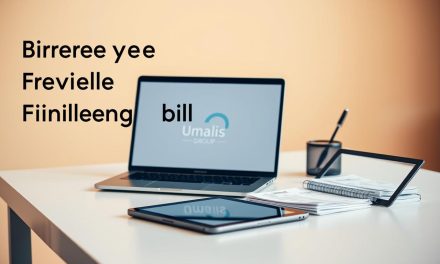Surprising fact: nearly half of small independent firms see a single revenue source fail in a downturn, yet diversified brands often thrive.
For independent professionals in France, building more than one revenue line is a strategic move to protect your business and buy you time to grow. Relying on a single client or project raises volatility and limits long-term stability.
We explain the difference between active work-for-pay offers and passive income that pays later after an upfront setup, such as a digital product that sells while you sleep. You will also find the familiar seven-category framework translated to solo practice so the options feel feasible, not overwhelming.
Practical steps include tracking receipts, forecasting cash flow, and keeping tidy accounts. Start small, test low-lift formats, and scale the most reliable ways. For concrete options and examples, see this guide on alternative income options.
Table of Contents
Key Takeaways
- Diversification reduces risk and improves predictability for solo professionals.
- Know the difference between active work and passive approaches before you commit.
- Apply the seven-category model to your offers without overcomplicating things.
- Track money and expenses closely; forecasting is essential.
- Start with low-cost tests and scale the most stable options over time.
Why Multiple Income Streams Matter for Independent Professionals in France
Adding one or two additional revenue channels can be the difference between a quiet quarter and a business that keeps running.
Financial stability for freelancers and micro-entreprises is often about smoothing cash flow. A second or third stream helps during seasonal dips or when a key client ends a contract.
Predictable retainers, recurring fees, and staggered billing reduce pressure on your main offer. This approach lowers risk: if one source slows, others cover operational costs, taxes, and your personal runway.
We draw lessons from long-standing examples. Virgin grew from a record label into airlines and telecom by expanding into adjacent markets. For tradespeople in France, partnering with property managers or running safety workshops offers a practical, lower-cost path to diversification.
« Diversification is not about chasing everything at once; it’s a disciplined way to protect your money and grow sustainably. »
- Select sources that complement your positioning to boost cross-sell potential.
- Add one new stream at a time, test demand, then scale.
- Balance return with complexity and your available time.
For a practical view on planning and long-term financial stability, see our guide on financial stability.
Active vs Passive: Understanding the Two Core Types of Income
Clear definitions help you decide where to invest your time and capital. Below we describe how direct, billable work differs from asset-based returns and what that means for your schedule and cash flow.
Active income — time for pay
Active work is straightforward: you sell hours or services and receive payment immediately. It is easier to control but limited by available time. For many French freelancers, retainers and hourly contracts form this base layer of security.
Passive income — upfront effort, later returns
Passive income requires building an asset or product first. An example is an online store: you set up, promote, and then receive orders even when you are not working. Expect periodic maintenance, customer support, and marketing to keep sales steady.
- Hybrid ways blend both models: a paid audit plus template downloads or a service with course upsells.
- Document processes to cut future time and protect quality.
- Track simple metrics per income stream: conversion, repeat purchase, and lifetime value.
Choose a balance that fits your goals and risk tolerance. For help structuring options and testing low-cost formats, see our guide on income-stream diversification.
The Classic Seven Streams of Income Explained with Examples
A practical breakdown of seven revenue types helps you move from billable work to owned assets. Below we define each part and give concise examples suited to freelancers in France.

Earned and profit models for solo businesses
Earned means fees for time: consulting, hourly retainers, and client projects. For many independents this is the foundation.
Profit comes from selling a packaged product or productized service — for example, a fixed-price website bundle or a workshop ticket.
Interest, dividends, and capital gains
Interest is low-risk yield from savings or government bonds; term and rate affect planning.
Dividends arrive when you hold stocks in established firms; look at payout history and sector strength.
Capital gains result from selling appreciated assets. Plan for taxes and transaction costs when you buy low and sell higher.
Rental and royalty revenue
Rental requires capital and management: budget for vacancies, repairs, and local regulations in France.
Royalties come from licensing creative work — books, templates, software — and protect your asset while earning ongoing payments.
- Sequence example: start with earned work, productize key services, then add conservative interest/dividend holdings.
- Consider liquidity: earned cash is fastest; property and capital gains can be slow to convert to money.
- Keep separate bookkeeping categories for each type to simplify tax reporting and performance tracking.
Income Streams You Can Start with Your Existing Skills
Turn the skills you already use daily into small, sellable offers that fit your schedule.
Freelance consulting and side packages
Package your expertise as audits, one-off consulting, or done-for-you services. Keep scope and fees fixed so clients buy without long negotiation.
Practical client paths: referrals, local networks, and platforms like Upwork and Fiverr help you find early work fast.
Subscription services and retainers for predictable cash
Convert episodic tasks into monthly retainers or small subscription tiers. This reduces billing churn and gives steadier cash while you keep your main job.
- Productize a service with clear deliverables and a pilot offer.
- Validate demand via a short pilot, testimonials, and limited slots.
- Offer a low-cost upsell: template, mini-guide, or checklist to begin to generate income beyond delivery.
| Offer | Setup Time | Typical Price | Best Channels |
|---|---|---|---|
| Fixed-scope audit | 1–3 days | €150–€600 | Referrals, Upwork |
| Monthly retainer | 1 week | €300–€1,500/mo | Local networks, LinkedIn |
| Template or mini-guide | 2–5 days | €10–€80 | Shopify, Etsy, Substack |
Checklist to ship in two weeks: pick one offer, set price, create one-page pitch, list on a marketplace, and open three pilot slots.
Digital Products and Platforms: Scalable Passive Income Streams
Digital goods let you scale a single idea into repeatable sales with modest upkeep.
What they are: digital products include courses, ebooks, templates, spreadsheet kits, and stock photos. Create once, sell many times; margins are high and delivery costs stay low.
Where to sell and what to build
Set up an online store on platforms like Etsy or Shopify for templates and kits. Use Teachable or similar for courses.
Consider job boards, lightweight apps, or membership communities for recurring fees and community value.
« A long-tail asset such as stock photos may pay pennies per file at first but scales with catalog and time. »
| Offer | Setup | Typical Price | Best platform |
|---|---|---|---|
| Course + workbook | 2–4 weeks | €50–€400 | Teachable, Podia |
| Template or spreadsheet kit | 3–7 days | €10–€80 | Etsy, Shopify |
| Membership / job board | 4–8 weeks | €10–€50/mo | Memberful, Circle |
Launch plan: build one focused product from frequent client questions, announce to your list, share on social media, and ask partners to mention you. Track feedback and version or bundle to raise value.
For practical setup choices and self-employment guidance, see our guide on self-employment options.
Content Channels That Generate Income
Content channels turn your expertise into repeatable, measurable value for an audience you control.
Affiliate marketing works when you promote aligned products via a blog, newsletter, or social posts. Use tracked links, disclose clearly, and prioritise trust. Build honest reviews and how-to pieces that match your readers’ needs.
Affiliate marketing via blog, newsletter, or social media
Start with one audience and one category of products. Test small promotions, track clicks, and measure conversions. Keep offers relevant so your credibility stays strong.
YouTube channel monetization: ads, sponsorships, and memberships
A successful youtube channel needs topic focus and a consistent publishing cadence. Monetize with ads, sponsorship packages, and channel memberships once thresholds are met.
Stock photos, digital designs, and narration royalties
Creators sell stock photos or designs on marketplaces like Shutterstock and earn royalties that compound over time. Audiobook narration also pays per sale and per platform license.
- Select partners that serve your audience first.
- Repurpose one video into a blog post, newsletter excerpt, and short social clip.
- Use an email service, tracking links, and analytics to attribute results.
| Channel | Quick Win | Monetization |
|---|---|---|
| Blog / Newsletter | Review post + signup | Affiliate commissions, memberships |
| YouTube channel | How-to video series | Ads, sponsorships, memberships |
| Stock & Royalties | Upload portfolio | Licensing fees, per-sale royalties |
Action for 30 days: pick one channel and one monetization route, publish three pieces, and measure clicks and conversions. For tips on finding clients to amplify your offers, see our guide on how to find clients online.
Real Estate and Property-Based Streams
Real estate offers practical options for independents seeking steady cash and asset growth. Choose an entry that fits your capital, time, and appetite for management.
Rental properties and short-term rentals for steady cash flow
Long-term rental properties deliver monthly rent and long-term appreciation. They often need larger capital, tenant screening, and routine maintenance.
Short-term rentals (Airbnb-style) can boost yields but add frequent cleaning, check-ins, and variable occupancy risk. Assess local rules in France before launching.
Unused space, vending machines, and asset rentals
Unused space rentals — garages, storage, or parking — require minimal fit-out and low ongoing effort. Demand for storage in urban zones is rising.
Vending machines and tool rentals are semi-passive: initial placement and restocking matter most. These options suit a step-by-step approach.
REITs: lower-capital access to property
Real estate investment trusts (REITs) let you access diversified property portfolios with modest capital.
Expect dividend yields typically in the 4–10% range and market volatility similar to equities. REITs bring liquidity that direct property lacks.
Due diligence checklist
- Location, demand drivers, and regulatory limits.
- Maintenance, insurance, taxes, and management fees.
- Decide self-manage vs. professional management to model net returns.
- Keep separate bookkeeping per property or asset for clarity and tax reporting.
| Option | Capital | Management | Typical benefit |
|---|---|---|---|
| Long-term rental | High | Moderate to high | Stable monthly rent + appreciation |
| Short-term rental | Medium | High | Higher yields, variable occupancy |
| Unused space / parking | Low | Low | Low complexity cash |
| Vending / small asset rental | Low–Medium | Low–Medium | Semi-passive revenue |
| REITs | Low | Low | Dividend yield + liquidity |
Start small: list unused space first, then test a single rental or a REIT position. Track gross yield, net yield, and a vacancy allowance to judge performance. This staged approach helps you align property choices with your horizon and goals.
Investment Streams: Interest, Dividends, ETFs, and Bonds
A cautious allocation to savings, bonds, and ETFs can stabilise your portfolio while you focus on clients.
High-yield savings and short-duration bonds provide low-risk interest returns and liquidity. Bonds typically yield 2–5% annually depending on term and credit quality.
Dividend-paying stocks add potential capital growth plus regular payouts. Check payout ratio, free cash flow, and sector health to judge reliability.
ETFs and broader diversification
ETFs offer low-cost access to markets and automatic diversification. Many platforms now advertise zero-commission trading and dividend reinvestment; always review fees.
Loan investing platforms
Peer lending lets you earn interest by funding loans. Returns vary by risk and term. Match durations to your cash needs and limit exposure per borrower.
- Conservative sleeve: high-yield savings + short bonds for safety and liquidity.
- Growth sleeve: dividend stocks and broad ETFs for capital appreciation.
- Supplement: loan platforms for higher interest with managed risk.
| Vehicle | Typical return | Liquidity | Primary risk |
|---|---|---|---|
| High-yield savings | 0.5–2% | High | Low real return vs inflation |
| Short-duration bonds | 2–5% | Medium | Interest rate sensitivity |
| Dividend stocks | 2–6% yield | High | Market volatility, payout cuts |
| ETFs | Varies by index | High | Market risk, tracking error |
| Loan platforms | 4–10% | Low–Medium | Credit/default risk |
Set a simple rebalancing rule (for example, quarterly) and record performance. Open accounts with regulated providers, automate contributions, and keep clear records for tax and planning.
Diversification Strategy: From One Product to Multiple Sources
A single, focused service can become a suite of related products without doubling your workload.

Expand a service into courses, digital products, and affiliate offers
Map one core offer to three adjacent items: a short course, a template pack, and a partner product you can promote.
Test first: run a paid pilot or pre-order to validate demand before full production.
Balancing effort, capital, and time
Prioritise low-effort wins that need little capital: templates, checklists, or a mini-course recorded over a weekend.
Reserve more time and modest budget for larger products. Use affiliate marketing to add partner offers without heavy build costs.
- Quarter plan: one high-fit product + one low-lift partner.
- Metrics: conversion rate, repeat buyers, and net margin per product.
- Governance: consistent naming, unified pricing, and simple bundles.
| Offer | Setup time | Approx. capital | Role |
|---|---|---|---|
| Mini-course | 1–4 weeks | €200–€1,000 | High value, moderate effort |
| Template pack | 2–7 days | €0–€200 | Low effort, quick sell |
| Affiliate partner | 1–3 days | €0–€100 | Low capital, complements offers |
Planning, Compliance, and Time Management
A clear plan keeps your day-to-day delivery intact while new offers grow in the background.
Map effort versus return by separating quick wins from long-term assets. Quick wins take little setup and show fast cash. Long-term assets need more time, capital, and marketing before they pay back. Match each idea to a timeline and expected return so decisions stay rational.
Mapping effort vs. return: quick wins vs. long-term assets
Use a simple grid: low effort / fast return, high effort / delayed return. Start with one low-effort test while you protect core work and client commitments.
Basic tax and record-keeping considerations for multiple income
Monitor incomings and expenses weekly. Keep separate accounts and label transactions by source. Store receipts digitally and keep copies for tax filing.
- When to see an accountant: capital events, asset sales, or tax complexity.
- Reserve and savings: set aside VAT, social charges, and annual tax liabilities into a dedicated savings pot.
- Risk controls: use contracts, insurance, and clear terms for new offers.
- Quarterly review: retire low performers and scale what works.
| Task | Time per week | Purpose | When to escalate |
|---|---|---|---|
| Client delivery | Core hours | Revenue & reputation | If quality slips |
| New product test | 2–5 hours | Validate demand | After 3 months no traction |
| Bookkeeping & tax prep | 1–2 hours | Compliance & planning | Before quarterly review |
| Reserve top-up | Monthly task | Cover VAT/social charges | If savings fall below target |
90-day execution plan: pick one quick-win product, allocate a weekly time budget, open a dedicated account for receipts, run the pilot, then review results at 90 days. Consult a tax professional before any asset disposal to confirm capital gains and personal tax rules in France.
Conclusion
Balancing short-term gigs with long-term assets helps you keep cash flowing while you build value.
Passive income from digital products, an income diversification guide, or real estate (rental properties, REITs) complements your client work. Consider bonds, dividend stocks, an online store, affiliate marketing, or a YouTube channel as parts of a measured plan.
Pick two ways to start: one near-term paid offer and one asset play. Track results, keep clear records, and maintain a reserve. Small tests—templates, a mini-course, or a short rental pilot—reduce risk and build momentum.
Take one concrete step this week: choose the pilot, set a deadline, and review outcomes after 90 days. Stay disciplined, document choices, and improve the portfolio over time to protect your practice.
FAQ
What does "creating multiple income streams" mean for independent professionals?
It means building several distinct sources of money so you are not reliant on a single client or job. Examples include consulting fees, rental returns, dividends from stock investments, digital product sales, and affiliate commissions. This mix increases financial stability and reduces client concentration risk.
Why should a freelancer or consultant in France diversify their revenue sources?
Diversification smooths cash flow and protects against client loss, slow seasons, or market shifts. It also helps with long-term planning for retirement and business growth by combining active work with asset-based returns like property rentals or dividend-paying equities.
What is the difference between active and passive revenue models?
Active models trade time for money—billing hours, delivering services, or taking projects. Passive models require upfront work or capital—creating courses, buying rental property, or investing in ETFs—and then generate recurring returns with less daily effort.
Which seven classic sources should I consider when diversifying?
Focus on earned fees for services, profit from products, interest from savings or loans, dividends and capital gains from stocks, rental and royalty returns from property and creative work, and business ownership profits. Each has distinct effort and capital needs.
How can I use existing skills to start new revenue channels?
Convert expertise into consulting packages, workshops, subscription services, or digital products like ebooks and templates. Use platforms such as Teachable, Shopify, or Patreon to scale offerings and secure recurring payments.
What digital products sell well for professionals?
Online courses, downloadable templates, spreadsheet kits, and niche ebooks perform strongly. They require initial creation time and promotion but can later deliver steady returns via marketplaces or your website.
How do content channels generate money?
Blogs, newsletters, YouTube, and social media convert audiences into revenue through affiliate partnerships, sponsorships, ad revenue, product sales, and paid memberships. Consistent content and a clear value proposition drive conversions.
Is real estate a good option with limited capital?
You can start with REITs or crowdfunding platforms to gain property exposure without buying a whole building. Direct rental ownership offers higher control but needs more capital and management effort.
Which financial investments provide lower-effort returns?
High-yield savings, dividend stocks, ETFs, and bonds offer passive cash flow and diversification. Robo-advisors and index funds minimize ongoing management while aiming for steady long-term growth.
How should I balance time, capital, and risk across multiple sources?
Map each option by required time, upfront capital, and expected return. Prioritize quick wins that fund longer-term assets. Reinvest profits into diversified vehicles to manage volatility and compound gains.
What basic tax and record-keeping steps should independent professionals follow?
Keep separate accounts for business and personal funds, retain invoices and receipts, and track platform fees and royalties. Consult a tax advisor familiar with French regimes like micro-entreprise or réel to optimize deductions and compliance.
How long before passive channels start generating usable cash?
Timelines vary: digital products and affiliate setups can produce returns within weeks to months; rental income and capital appreciation often require months to years. Treat passive methods as medium- to long-term strategic plays.
Can small businesses replicate strategies used by larger brands?
Yes. Scale proven tactics—offers, membership models, and partnerships—by adapting them to your niche. Use case studies from established brands as templates while keeping costs and audience size realistic.





